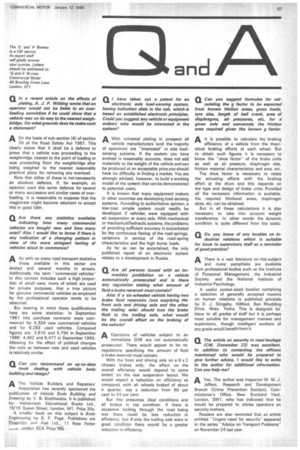Q In a recent article on the affects of plating,
Page 69

If you've noticed an error in this article please click here to report it so we can fix it.
A. J. P. Wilding wrote that an operator would not be liable to an overloading conviction if he could show that a vehicle was on its way to the nearest weighbridge. On what grounds does he make such a statement?
AOn the basis of sub-section (4) of section
26 of the Road Safety Act 1967. This clearly states that it shall be a defence to prove that a vehicle was proceeding to the weighbridge nearest to the point of loading or was proceeding from the weighbridge after being weighed to the nearest reasonably practical place for removing any overload.
Note that either of these is not necessarily an absolute defence. If, for example, an operator used this same defence for several or many successive and similar cases of overloading, it is reasonable to suppose that the magistrate might become reluctant to accept this in good faith.
















































































































